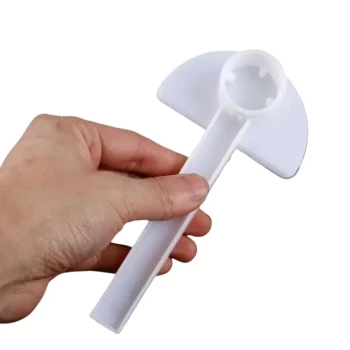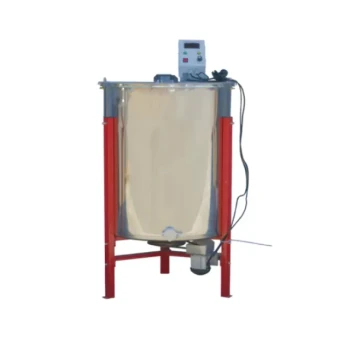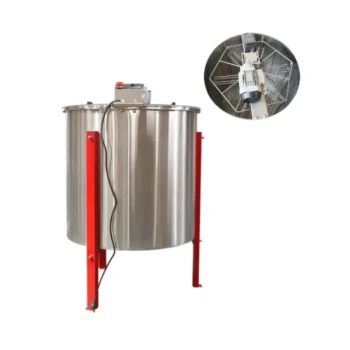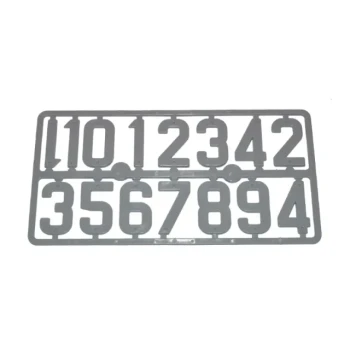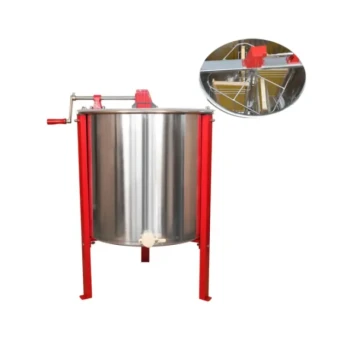In short, you must use personal protective equipment (PPE), including a respirator, acid-resistant gloves, and splash-proof goggles when preparing oxalic acid solutions. The primary dangers are inhaling the fine crystal dust during measurement and skin or eye contact with the corrosive solution. Always mix in a well-ventilated area, preferably outdoors.
While often perceived as a "natural" or "organic" treatment for Varroa mites, oxalic acid is a corrosive chemical that demands the same respect as any other strong acid. The goal is not simply to wear safety gear, but to establish a protocol that systematically minimizes every point of potential exposure.
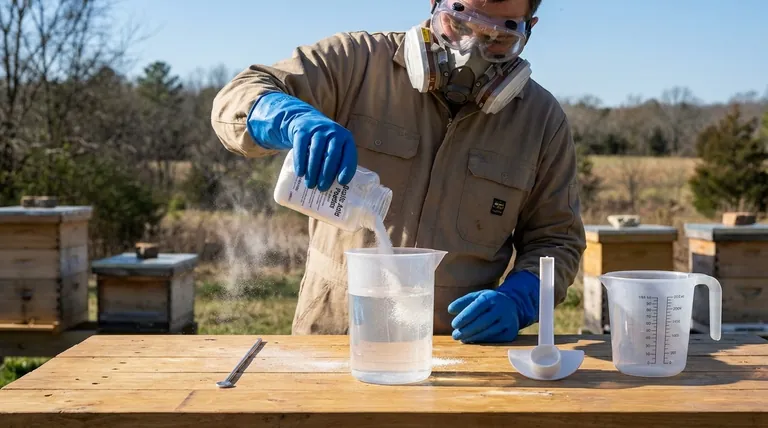
Understanding the Hazard: Why Caution is Critical
To handle oxalic acid safely, it is essential to understand what it is and how it can cause harm. It is a naturally occurring organic acid, but in its concentrated crystalline form, it is a potent corrosive.
It's a Corrosive Acid
The primary risk from the mixed solution is its corrosive nature. Direct contact with skin can cause chemical burns, irritation, and pain.
Splashes are a significant concern. Even a small drop of oxalic acid solution in the eye can cause severe, potentially permanent damage.
The Danger of Dust Inhalation
The most significant risk during preparation comes from the oxalic acid dihydrate crystals, which are essentially a fine powder. This dust can easily become airborne when you scoop or pour it.
Inhaling this dust exposes the sensitive tissues of your throat and lungs directly to the acid, which can cause immediate respiratory irritation and damage.
The Risk of Systemic Absorption
Beyond immediate burns, high levels of exposure—primarily through inhalation or ingestion—can lead to systemic poisoning. Oxalic acid can bind with calcium in your blood, forming calcium oxalate crystals.
This process can cause acute kidney damage or failure in cases of significant exposure. This is why a proper respirator is not just a suggestion, but a critical piece of equipment.
Your Essential Safety Protocol
A consistent and disciplined protocol is the key to safety. Treat the preparation process with the same focus you would any other hazardous task.
Personal Protective Equipment (PPE) is Non-Negotiable
"PPE" is a system where each component protects a different part of your body. Using only one piece is insufficient.
- Respirator: For mixing the powder, a P100 or N95 rated respirator is the absolute minimum to prevent dust inhalation. For vaporization, a half-mask respirator with acid gas/organic vapor cartridges is required.
- Eye Protection: Wear chemical splash goggles, not just safety glasses. Goggles form a seal around your eyes that prevents splashes from entering from the side or top.
- Gloves: Use acid-resistant gloves like nitrile or neoprene. Do not use cloth or leather gloves, which will absorb the solution.
- Protective Clothing: Wear long sleeves, long pants, and closed-toe shoes to protect your skin from accidental drips or splashes.
The Mixing Environment Matters
Never mix oxalic acid in an enclosed, unventilated space like a kitchen or a small shed. The dust can settle on surfaces and fume concentration can build.
Always prepare your solution outdoors, standing upwind so that any dust or fumes are carried away from you.
Proper Mixing Technique
Follow a precise order of operations to minimize risks. The universal rule for diluting acids is to always add the acid to the water, never the other way around.
Adding water to acid can generate a rapid exothermic reaction, causing the solution to boil and splash violently. Slowly add the pre-measured oxalic acid crystals to your water and stir gently until they are fully dissolved.
Common Pitfalls to Avoid
Many beekeepers have used this treatment without issue, but that can lead to complacency. Avoiding common mistakes is just as important as following the correct procedure.
Underestimating the Powder
The risk is highest when the acid is in its powdered form. Be especially cautious when scooping, weighing, and first adding it to the water, as this is when dust is most likely to become airborne.
Using Inadequate PPE
A simple paper dust mask is not a respirator. Standard eyeglasses are not chemical splash goggles. Using the wrong equipment provides a false sense of security while offering little actual protection.
Disregarding the Label
The manufacturer's label is a legal document. It provides EPA-approved concentrations, application methods, and safety information specific to the product you are using. Deviating from these instructions can be ineffective for the bees and dangerous for you.
Making the Right Choice for Your Goal
Your safety protocol should be adapted to the specific task you are performing.
- If your primary focus is mixing the solution: Prioritize respiratory and eye protection. The biggest risks are inhaling the fine crystal dust and splashing during the mixing process.
- If your primary focus is applying a dribble treatment: Prioritize gloves and eye protection. The risk of inhalation is low, but the risk of skin and eye contact from drips and splashes is high.
- If your primary focus is applying a vaporization treatment: Use a full vaporization-rated respirator (acid gas/organic vapor cartridges). Stand upwind and well away from the hive entrance, and never perform vaporizations in an enclosed bee yard or shed.
Ultimately, responsible beekeeping includes protecting yourself just as much as you protect your bees.
Summary Table:
| Key Precaution | Purpose | Critical Equipment |
|---|---|---|
| Protect from Dust Inhalation | Prevents respiratory irritation and systemic poisoning from airborne crystals. | P100/N95 Respirator |
| Prevent Skin & Eye Contact | Avoids chemical burns and permanent eye damage from corrosive solution. | Acid-Resistant Gloves, Splash Goggles |
| Ensure Safe Mixing | Prevents violent reactions and splashing; minimizes fume concentration. | Mix Outdoors, Upwind; Add Acid to Water |
| Follow Application Guidelines | Tailors safety measures to the specific method (dribble vs. vaporization). | Task-Specific PPE (e.g., Vaporization Respirator) |
Protect Your Apiary with Professional-Grade Equipment from HONESTBEE
Safely managing Varroa mites is a cornerstone of successful beekeeping. At HONESTBEE, we supply commercial apiaries and beekeeping equipment distributors with the durable, reliable supplies needed to implement treatments like oxalic acid safely and effectively. From high-quality PPE to precise application tools, our wholesale-focused operations ensure you get the professional equipment your operation depends on.
Ready to equip your team with the right tools for the job? Contact HONESTBEE today to discuss your needs and discover how our products support the health of your bees and the safety of your beekeepers.
Visual Guide
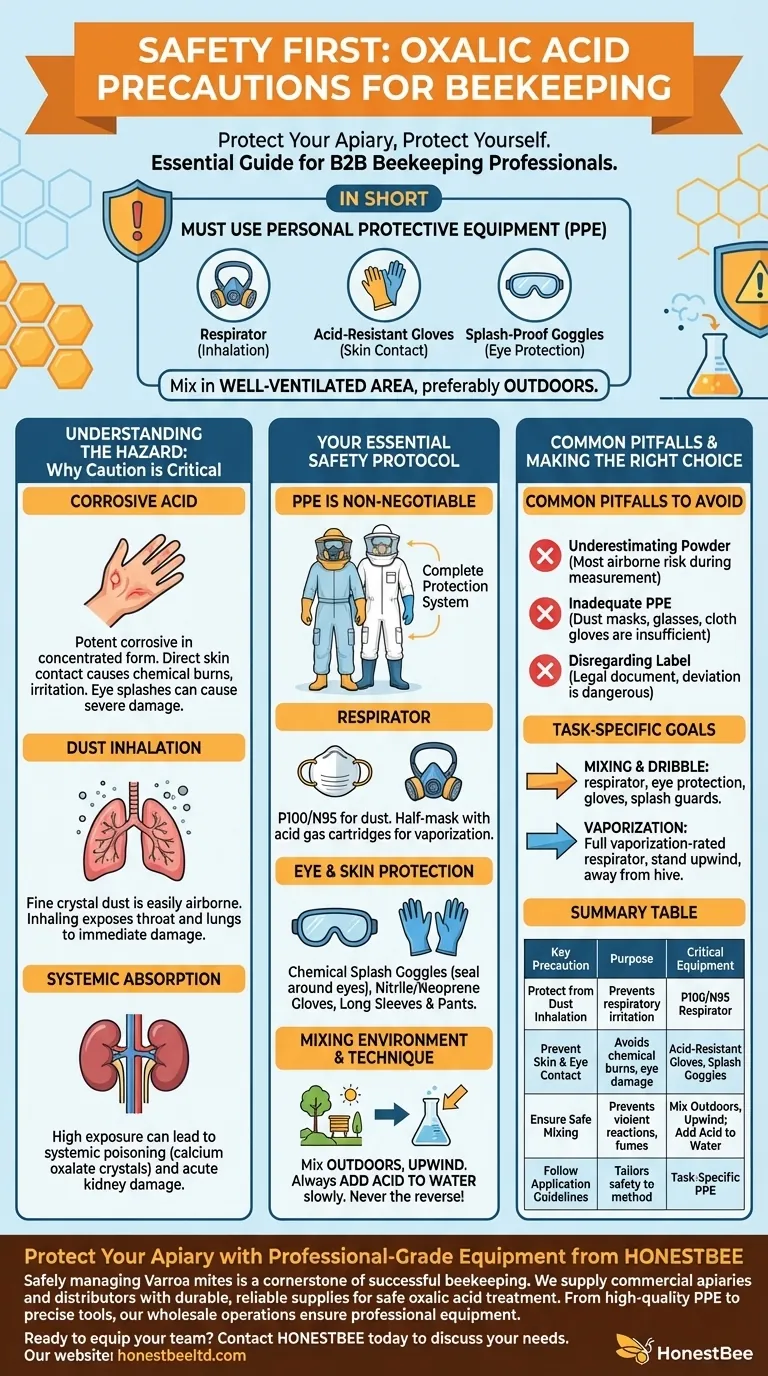
Related Products
- HONESTBEE Entrance Bee Feeder Efficient Hive Front Liquid Feeding Solution for Beekeeping
- HONESTBEE Professional Entrance Bee Feeder Hive Nutrition Solution
- HONESTBEE Round Hive Top Bee Feeder for Syrup
- 3.5L Plastic Beehive Frame Feeder Deep Frame Water Feeder for In Hive Use
- Professional In-Hive Bee Feeder HONESTBEE Frame for Beekeeping
People Also Ask
- How to make an entrance feeder for bees? A DIY Guide for Safe & Effective Feeding
- What are the different types of honey bee feeders? Choose the Right Feeder for Your Hive
- How does a beehive entrance feeder work? A Simple Guide to Supplemental Feeding
- What strategy was used to eliminate summer migration in the Sierra foothills? Proactive Feeding Based on Brood Signals
- What is an entrance feeder? A Guide to Its Simple Design and High Robbing Risk
